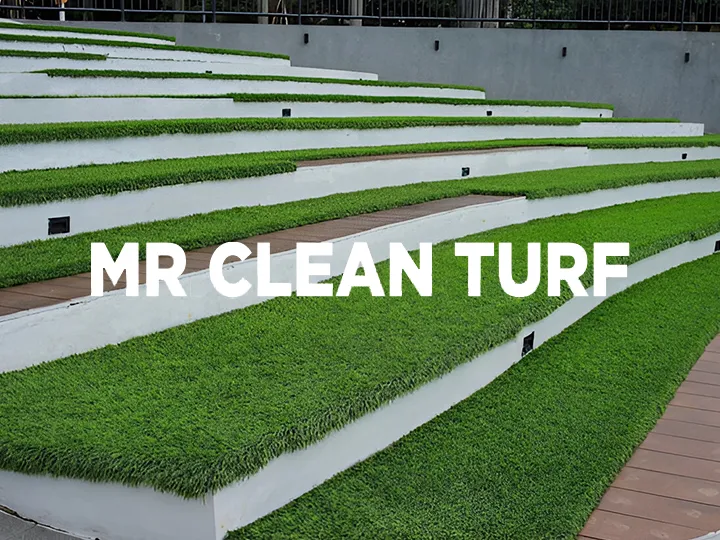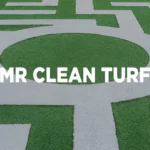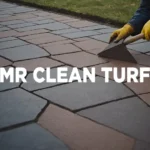Composite Pavers | The Stylish and Sustainable Choice for 2025
The search ends here for paving solutions that excel in style, durability, and preservation of the environment. Composite pavers are the answer. The new year brings a transformation of outdoor design standards through these advanced materials. In outdoor projects that target patios, driveways, or garden paths, composite pavers exceed all the advantages that traditional materials like cobblestone pavers, bluestone pavers, and concrete pavers have to offer.
Property owners benefit from composite pavers, which deliver exceptional durability against weather elements and resist color fade while providing an appearance similar to expensive materials such as wood or slate and cutting down environmental effects. The combination of easy installation alongside small maintenance needs makes these pavers a fantastic choice for homeowners seeking sustainable options that look great and last for the long term.
The reasons behind their position make them the perfect selection for contemporary homeowners.
Why Pavers Matter for Modern Landscaping
Today outdoor spaces serve as fashion extensions that carry the style elements of residential homes. Since their introduction to the market, older stone options such as cobblestone and bluestone remain popular; homeowners wish to see additional options. Modern residential trends combine three essential characteristics by selecting materials that are visually appealing while being resistant to damage and environmentally responsible.
The combination of playground safety and affordability makes rubber pavers common for playground use, and concrete pavers reign supreme for driveways. Several common flaws, such as cracking and fading and expensive maintenance costs, affect most traditional building materials. The rustic appeal of flagstone pavers is diminished because they chip along the edges while porcelain pavers remain slippery before they dry. The market deficiencies create a perfect opportunity for the success of composite pavers.
The Rise of Eco-Friendly Outdoor Design
People who manage cities, along with those owning homes, are implementing an emphasis on environmentally conscious practices. Urban development projects launched after 2025 must follow LEED certification standards as well as other green specifications. Plans to achieve environmental targets benefit from the usage of composite pavers since these products contain between 50–70% recycled plastics along with rubber components. People do not need to seal composite pavers since these materials require no chemical treatments for upkeep. The sun-detecting capability of these materials returns reflected light, while dark bluestone pavers consume and transform solar energy into heat.
What Makes Composite Pavers Stand Out?
Outdoor areas benefit from composite pavers because they bring together durability with style and sustainability. These pavers outperform traditional flagstone pavers and porcelain pavers since they endure extreme weather conditions without losing their attractive look. Grade A+ Combination Pavers provide practical benefits through their environmentally friendly properties and need little maintenance, so homeowners and municipal planners select them often. The following discussion will explore how these products differ from the rest.
DurabilityMeets Style
Ice-cold weather cannot break composite pavers, and they remain protected from UV ray degradation, which is typical with flagstone pavers and porcelain pavers. Their construction enables homeowners to install them by themselves and reduces installation costs by half compared to using cobblestone pavers. The product range consists of 15+ color and texture options that provide upscale slate or wood appearances at reduced costs.
How Composite Pavers Reduce Environmental Impact
Composite pavers containing 500 square feet save one ton of plastic waste from reaching landfill sites. Because they allow water penetration, these permeable variants block between sixty and eighty percent of stormwater runoff, so they serve urban areas fighting flooding. Harm to natural ecosystems is prevented by composite pavers since they do not require the extraction processes used for making bluestone pavers or flagstone pavers.
Comparing Popular Paving Materials
A well-selected paving material determines the success of your outdoor construction work. Traditional cobblestone pavers and bluestone pavers maintain their appeal, yet they oblige homeowners to handle their environmental and maintenance implications. The following comparison of popular materials helps you decide intelligently.
Material |
Pros |
Cons |
Best Use |
| Cobblestone Pavers | Classic, timeless look | Uneven surface, high installation costs | Historic or rustic designs |
| Bluestone Pavers | Natural beauty, unique blue-gray hues | Prone to staining, heavy, expensive | Rustic gardens, walkways |
| Rubber Pavers | Soft, safe for play areas | This material breaks down when exposed to sunlight while having weak endurance against heavy applications, so it cannot serve many purposes. | Playgrounds, gym floors |
| Concrete Pavers | Affordable, widely available | Cracks easily require frequent resealing | Driveways pavers, budget projects |
| Flagstone Pavers | Unique, artistic patterns | Fragile edges, chips over time | Patios, garden paths |
| Porcelain Pavers | Sleek, modern appearance | Slippery when wet, expensive | Pool decks, modern patios |
| Composite Pavers | Durable, eco-friendly, low maintenance | Higher upfront cost than concrete | All-purpose: patios, driveways |
Planning Your 2025 Outdoor Project
Planning an outdoor project in 2025? You should maintain harmony between your financial plan and design plans in addition to considering enduring requirements. The outdoor space will benefit from composite pavers as an economical and fashionable, ecologically friendly installation material that outlasts concrete pavers and bluestone pavers. Follow these steps to achieve successful planning for your space.
Budgeting for Long-Term Value
Composite pavers fall in the cost range of 10–14 per square foot, while both concrete pavers cost 8–12 and bluestone pavers cost 15–20. Composite pavers maintain their value for 25 years because they will never require replacement, yet rubber pavers need to be replaced after 10 years. Money spent on composite pavers now produces lifetime savings alongside an enduring attractive appearance.
Choosing the Right Paver for Your Space
- Driveways: Opt for composite or concrete pavers for heavy loads.
- Patios: The appearance of composite pavers matches flagstone as well as porcelain tile without losing traction on the surface.
- Play Areas: The proper application of rubber pavers is possible, yet these materials should be placed in areas where UV radiation is minimal.
The selection of appropriate outdoor materials enables you to build durable and fashionable outdoor environments that resist breakdown.
Get a Quote!
Get in touch with Mr. Clean Turf now to receive a no-obligation quote for composite pavers. Call us today to obtain a completely free consideration without any future obligations.
FAQs
Q: Can composite pavers handle extreme weather?
Yes, they successfully endure temperature ranges from -30°F to 120°F without breaking.
Q: Are they safe for pets?
Composite pavers present safety benefits for pets because their non-toxic material and lower temperature surface make them much better choices than bluestone pavers.
Q: How do they compare to natural stone?
These pavers offer three key benefits because they weigh just 40% less than others, cost less to install, and require no sealing treatments that cobblestone pavers need.
Q: Are composite pavers eco-friendly?
A: Absolutely! The production process begins with recycled materials, which make up half to seventy percent of their composition, while they remain completely recyclable when their lifespan ends.
Q: Can I install composite pavers myself?
These pavers feature a simple interlocking system that enables homeowners to carry out installations by themselves and cut their expenses by half rather than using traditional materials.
Q: Do composite pavers fade over time?
These pavers have UV protection so they maintain their color appearance for many decades, while concrete pavers tend to fade over time.



